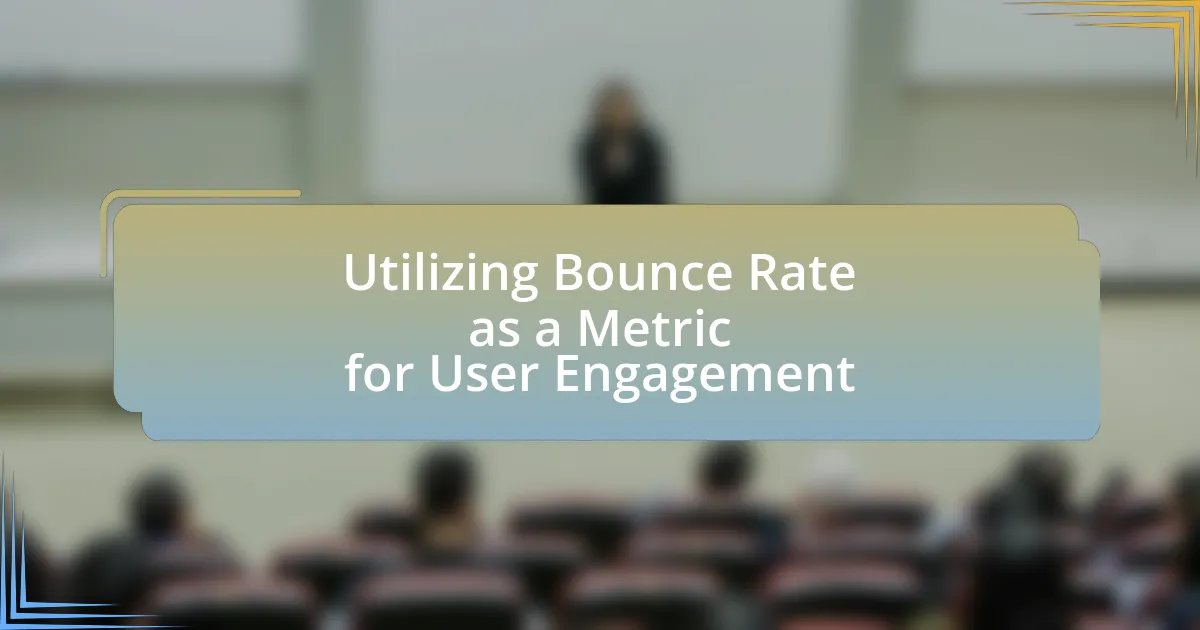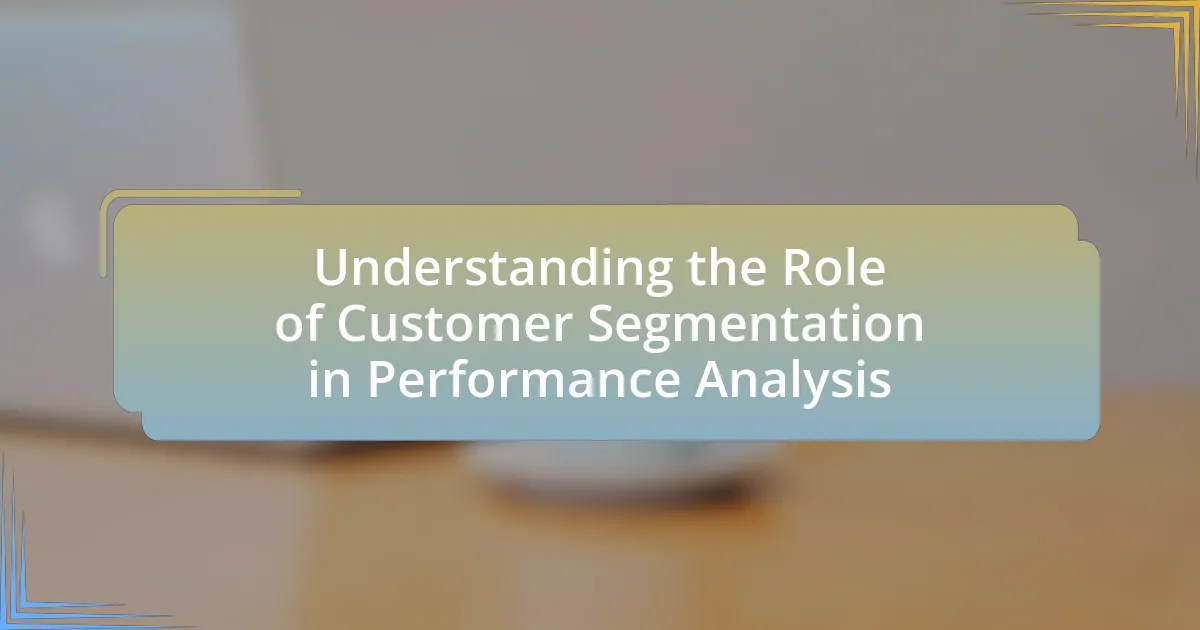Customer Lifetime Value (CLV) is a critical metric in online retail that quantifies the total revenue expected from a customer throughout their relationship with a business. This article provides a comprehensive overview of how to measure CLV, detailing its calculation methods, including historical and predictive approaches, and the key components involved, such as customer acquisition costs and retention rates. It also explores the significance of CLV in shaping marketing strategies, enhancing customer engagement, and optimizing product offerings to maximize profitability. Additionally, the article addresses common challenges in CLV measurement and offers practical tips for improving CLV in online retail settings.
-in-Online-Retail-1.webp)
What is Customer Lifetime Value (CLV) in Online Retail?
Customer Lifetime Value (CLV) in online retail is the total revenue a business can expect from a single customer account throughout the business relationship. This metric helps retailers understand the long-term value of acquiring and retaining customers, allowing for better marketing and sales strategies. For instance, a study by the Harvard Business Review indicates that increasing customer retention rates by just 5% can lead to an increase in profits of 25% to 95%. This demonstrates the importance of CLV in guiding investment decisions in customer acquisition and retention efforts.
How is CLV calculated in the context of online retail?
Customer Lifetime Value (CLV) in online retail is calculated by estimating the total revenue a business can expect from a customer over the entire duration of their relationship. This calculation typically involves three key components: average purchase value, purchase frequency, and customer lifespan.
To calculate CLV, first, determine the average purchase value by dividing total revenue by the number of purchases over a specific period. Next, calculate the purchase frequency by dividing the total number of purchases by the number of unique customers during that same period. Finally, estimate the customer lifespan, which is the average duration a customer continues to make purchases.
The formula for CLV can be expressed as: CLV = (Average Purchase Value) x (Purchase Frequency) x (Customer Lifespan). This method provides a concrete estimate of the value a customer brings to the business, allowing retailers to make informed decisions regarding marketing and customer retention strategies.
What are the key components of the CLV formula?
The key components of the Customer Lifetime Value (CLV) formula are customer revenue, customer lifespan, and customer acquisition cost. Customer revenue refers to the total income generated from a customer over their relationship with the business. Customer lifespan is the duration a customer continues to make purchases, typically measured in years. Customer acquisition cost is the total expense incurred to acquire a new customer, including marketing and sales expenses. These components are essential for calculating CLV, as they provide a comprehensive view of the profitability of acquiring and retaining customers in online retail.
How do customer acquisition costs influence CLV?
Customer acquisition costs (CAC) directly influence customer lifetime value (CLV) by determining the profitability of acquiring new customers. When CAC is high, it reduces the overall CLV because the revenue generated from a customer must exceed the acquisition cost for the business to be profitable. For instance, if a company spends $100 to acquire a customer who generates $150 in revenue over their lifetime, the CLV is $50. Conversely, if the CAC increases to $120, the CLV drops to $30, indicating lower profitability. This relationship highlights the importance of managing CAC to ensure that it remains proportionate to the expected CLV, thereby sustaining business growth and profitability.
Why is measuring CLV important for online retailers?
Measuring Customer Lifetime Value (CLV) is crucial for online retailers because it quantifies the total revenue a business can expect from a customer throughout their relationship. This metric enables retailers to identify the most valuable customer segments, optimize marketing strategies, and allocate resources effectively. For instance, a study by Harvard Business Review found that increasing customer retention rates by just 5% can lead to an increase in profits of 25% to 95%. By understanding CLV, online retailers can make informed decisions that enhance customer acquisition and retention efforts, ultimately driving long-term profitability.
What insights does CLV provide about customer behavior?
Customer Lifetime Value (CLV) provides insights into the long-term value a customer brings to a business, indicating their potential profitability over time. By analyzing CLV, businesses can identify which customer segments are most valuable, allowing for targeted marketing strategies and resource allocation. For instance, a study by McKinsey & Company found that increasing customer retention rates by just 5% can increase profits by 25% to 95%, demonstrating the importance of understanding customer behavior through CLV metrics.
How can CLV impact marketing strategies?
Customer Lifetime Value (CLV) significantly impacts marketing strategies by enabling businesses to allocate resources effectively and tailor their marketing efforts. By understanding the long-term value of customers, companies can identify high-value segments and focus on retention strategies that enhance customer loyalty. For instance, a study by McKinsey & Company found that increasing customer retention rates by just 5% can lead to an increase in profits of 25% to 95%. This data illustrates how CLV informs targeted marketing campaigns, personalized communications, and optimized customer acquisition costs, ultimately driving profitability and growth in online retail.

What are the different methods to measure CLV?
The different methods to measure Customer Lifetime Value (CLV) include historical, predictive, and traditional approaches. Historical CLV calculates the total revenue generated from a customer over their relationship with the business, often using past purchase data. Predictive CLV uses statistical models and machine learning algorithms to forecast future customer behavior and potential revenue, incorporating factors like purchase frequency and average order value. Traditional approaches, such as the simple formula of multiplying average purchase value by purchase frequency and customer lifespan, provide a straightforward estimation of CLV. Each method offers unique insights, allowing businesses to tailor their strategies based on customer value.
How does the historical method for calculating CLV work?
The historical method for calculating Customer Lifetime Value (CLV) works by analyzing past customer behavior to estimate future revenue generated from a customer over their entire relationship with a business. This method typically involves aggregating the total revenue earned from a customer during their previous purchases and dividing it by the number of purchases made, providing an average revenue per customer. For instance, if a customer spent $1,000 over five transactions, the average revenue per transaction would be $200. This historical data is then used to project future purchasing patterns, allowing businesses to estimate the total CLV based on the average revenue and expected retention period. This approach relies on actual sales data, making it a reliable method for businesses to understand customer value based on their historical interactions.
What data is needed for the historical CLV calculation?
To calculate historical Customer Lifetime Value (CLV), the following data is needed: customer purchase history, including transaction dates, amounts spent, and frequency of purchases. This data allows for the assessment of total revenue generated by a customer over their relationship with the business. Additionally, customer retention rates and the average duration of customer relationships are essential for understanding how long customers typically remain active. These metrics provide a comprehensive view of customer value over time, enabling accurate CLV calculations.
What are the limitations of the historical method?
The historical method has several limitations, primarily its reliance on available records, which can be incomplete or biased. This method often depends on documents, artifacts, and testimonies that may not represent the full context of events, leading to potential misinterpretations. Additionally, the historical method may struggle to account for the influence of present-day perspectives on past events, which can distort understanding. Furthermore, it lacks the ability to predict future trends, as it is inherently retrospective and does not incorporate real-time data analysis or current market dynamics. These limitations highlight the challenges historians face in constructing an accurate and comprehensive narrative of the past.
What is the predictive method for measuring CLV?
The predictive method for measuring Customer Lifetime Value (CLV) involves using historical customer data to forecast future revenue generated from a customer over their entire relationship with a business. This method typically employs statistical techniques such as regression analysis, machine learning algorithms, or cohort analysis to estimate future purchasing behavior based on past transactions, customer demographics, and engagement metrics. For instance, a study by Fader and Hardie (2013) in “The Customer Centricity Playbook” highlights that predictive modeling can significantly enhance the accuracy of CLV estimates by incorporating various customer attributes and behaviors, leading to more informed business decisions.
How does predictive modeling enhance CLV accuracy?
Predictive modeling enhances Customer Lifetime Value (CLV) accuracy by utilizing historical data to forecast future customer behavior and spending patterns. This approach allows businesses to identify key factors that influence customer retention and profitability, leading to more precise CLV calculations. For instance, a study by Fader and Hardie (2013) demonstrated that predictive models could improve CLV estimates by up to 20% compared to traditional methods, as they account for variables such as purchase frequency, average order value, and customer churn rates. By integrating these insights, companies can tailor their marketing strategies and resource allocation more effectively, ultimately driving higher customer value.
What tools can be used for predictive CLV analysis?
Predictive Customer Lifetime Value (CLV) analysis can be performed using various tools, including data analytics platforms, customer relationship management (CRM) software, and specialized predictive modeling tools. For instance, platforms like Google Analytics and Adobe Analytics provide insights into customer behavior and purchasing patterns, which are essential for CLV calculations. Additionally, CRM systems such as Salesforce and HubSpot offer features that track customer interactions and sales data, enabling businesses to forecast future value. Furthermore, tools like R and Python, equipped with libraries for statistical analysis and machine learning, allow for advanced predictive modeling techniques to estimate CLV accurately. These tools collectively enhance the ability to analyze and predict customer lifetime value effectively.

What factors influence Customer Lifetime Value in online retail?
Customer Lifetime Value (CLV) in online retail is influenced by several key factors, including customer acquisition cost, purchase frequency, average order value, customer retention rate, and customer engagement. Customer acquisition cost directly impacts CLV as it determines the initial investment needed to gain a customer. Purchase frequency and average order value together define the revenue generated per customer over time, while a higher customer retention rate indicates loyalty, leading to increased lifetime value. Additionally, customer engagement through personalized marketing and communication can enhance the overall shopping experience, encouraging repeat purchases. Research shows that businesses with strong customer engagement strategies can see a 23% increase in revenue, highlighting the importance of these factors in maximizing CLV.
How do customer retention strategies affect CLV?
Customer retention strategies significantly enhance Customer Lifetime Value (CLV) by increasing the duration and frequency of customer purchases. When businesses implement effective retention strategies, such as loyalty programs or personalized communication, they foster stronger relationships with customers, leading to repeat purchases. Research indicates that increasing customer retention rates by just 5% can boost profits by 25% to 95%, demonstrating the financial impact of retaining existing customers. Thus, effective retention strategies directly correlate with higher CLV, as they maximize the revenue generated from each customer over their lifetime.
What role does customer engagement play in increasing CLV?
Customer engagement significantly enhances Customer Lifetime Value (CLV) by fostering loyalty and repeat purchases. Engaged customers are more likely to return, leading to increased transaction frequency and higher average order values. Research indicates that businesses with high customer engagement can see a 23% increase in revenue, as engaged customers tend to spend more over time. This correlation between engagement and CLV is supported by studies showing that emotionally connected customers are more likely to recommend a brand, further amplifying its customer base and potential revenue.
How can personalized marketing improve customer retention?
Personalized marketing can significantly improve customer retention by creating tailored experiences that resonate with individual preferences and behaviors. When businesses utilize data analytics to understand customer habits, they can deliver relevant content, product recommendations, and targeted promotions, which enhance customer satisfaction and loyalty. Research indicates that personalized marketing can lead to a 20% increase in customer retention rates, as customers are more likely to engage with brands that recognize their unique needs and preferences. This approach not only fosters a stronger emotional connection but also encourages repeat purchases, ultimately increasing the Customer Lifetime Value (CLV) in online retail.
What impact do product offerings have on CLV?
Product offerings significantly influence Customer Lifetime Value (CLV) by determining customer satisfaction, retention rates, and overall purchasing behavior. A diverse and appealing product range can enhance customer engagement, leading to increased repeat purchases and higher average order values. For instance, research indicates that companies with a broader product assortment can achieve up to 30% higher CLV compared to those with limited offerings, as customers are more likely to return for additional purchases when they find products that meet their needs. Thus, effective product offerings directly correlate with improved CLV metrics in online retail.
How does product pricing strategy influence customer loyalty?
Product pricing strategy significantly influences customer loyalty by directly affecting perceived value and satisfaction. When customers perceive that they are receiving good value for their money, they are more likely to remain loyal to a brand. For instance, competitive pricing can attract customers, while premium pricing can create a perception of higher quality, both of which can enhance loyalty. Research indicates that 70% of consumers are willing to pay more for a better experience, highlighting the importance of aligning pricing with customer expectations and perceived value. Additionally, consistent pricing strategies, such as loyalty discounts or rewards programs, can reinforce customer retention by fostering a sense of belonging and appreciation among customers.
What is the relationship between product quality and CLV?
Product quality directly influences Customer Lifetime Value (CLV) by affecting customer satisfaction, loyalty, and repeat purchases. High-quality products typically lead to increased customer satisfaction, which fosters loyalty and encourages customers to make repeat purchases over time. Research indicates that customers who perceive high product quality are more likely to return, with studies showing that a 5% increase in customer retention can lead to a 25% to 95% increase in CLV. Therefore, maintaining high product quality is essential for maximizing CLV in online retail.
How can online retailers optimize CLV measurement?
Online retailers can optimize Customer Lifetime Value (CLV) measurement by utilizing advanced analytics and segmentation techniques. By leveraging data analytics tools, retailers can analyze customer behavior, purchase patterns, and engagement metrics to create more accurate CLV predictions. For instance, a study by McKinsey & Company found that companies using advanced analytics can improve their marketing ROI by 15-20%, which directly impacts CLV accuracy. Additionally, segmenting customers based on their purchasing behavior allows retailers to tailor marketing strategies and enhance customer retention efforts, further refining CLV calculations.
What best practices should be followed for accurate CLV tracking?
To achieve accurate Customer Lifetime Value (CLV) tracking, businesses should implement a multi-faceted approach that includes segmenting customers, utilizing comprehensive data analytics, and regularly updating CLV calculations. Segmenting customers allows for tailored strategies based on purchasing behavior, which enhances the precision of CLV estimates. Comprehensive data analytics, including tracking customer interactions across multiple channels, ensures that all relevant data points are considered, leading to more accurate calculations. Regularly updating CLV calculations is essential, as customer behavior and market conditions can change, impacting the accuracy of previous estimates. According to a study by McKinsey & Company, companies that effectively segment their customers can increase their CLV by up to 30%.
How can technology enhance CLV measurement processes?
Technology enhances Customer Lifetime Value (CLV) measurement processes by enabling advanced data analytics and automation. Through the use of machine learning algorithms, businesses can analyze vast amounts of customer data to identify patterns and predict future purchasing behavior, leading to more accurate CLV calculations. For instance, a study by McKinsey & Company found that companies leveraging advanced analytics can improve their marketing ROI by 15-20%, directly impacting CLV. Additionally, customer relationship management (CRM) systems integrate various data sources, providing a comprehensive view of customer interactions and transactions, which further refines CLV assessments.
What are common challenges in measuring CLV?
Common challenges in measuring Customer Lifetime Value (CLV) include data accuracy, customer behavior variability, and the complexity of predictive modeling. Data accuracy is crucial, as inaccurate or incomplete data can lead to misleading CLV calculations; for instance, a study by McKinsey found that companies with poor data quality can lose up to 30% of their revenue. Customer behavior variability complicates CLV measurement because individual purchasing patterns can differ significantly, making it difficult to predict future value based on past behavior. Additionally, the complexity of predictive modeling arises from the need to account for various factors such as market trends, seasonality, and customer segmentation, which can introduce further uncertainty into CLV estimates.
How can data accuracy issues affect CLV calculations?
Data accuracy issues can significantly distort Customer Lifetime Value (CLV) calculations by leading to incorrect assessments of customer behavior and profitability. When data is inaccurate, it can result in miscalculations of purchase frequency, average order value, and customer retention rates, all of which are critical components of CLV. For instance, if purchase history is not accurately recorded, the estimated future revenue from a customer may be overestimated or underestimated, leading to flawed business strategies. Studies have shown that companies with high data accuracy can improve their CLV calculations by up to 20%, demonstrating the direct impact of data integrity on financial forecasting and customer relationship management.
What strategies can mitigate challenges in CLV measurement?
To mitigate challenges in Customer Lifetime Value (CLV) measurement, businesses can implement data integration, predictive analytics, and customer segmentation strategies. Data integration ensures that all customer interactions across various channels are captured, providing a comprehensive view of customer behavior. Predictive analytics utilizes historical data to forecast future customer behavior, enhancing the accuracy of CLV estimates. Customer segmentation allows businesses to categorize customers based on purchasing behavior and preferences, enabling tailored marketing strategies that can improve retention and increase CLV. These strategies collectively enhance the reliability of CLV measurements, leading to more informed business decisions.
What practical tips can help improve CLV in online retail?
To improve Customer Lifetime Value (CLV) in online retail, businesses should focus on enhancing customer experience, personalizing marketing efforts, and implementing loyalty programs. Enhancing customer experience can be achieved by optimizing website usability and providing excellent customer service, which leads to higher retention rates. Personalizing marketing efforts, such as targeted email campaigns based on customer behavior, can increase engagement and repeat purchases. Implementing loyalty programs incentivizes customers to return, as studies show that loyal customers spend 67% more than new ones. These strategies collectively contribute to a significant increase in CLV.





